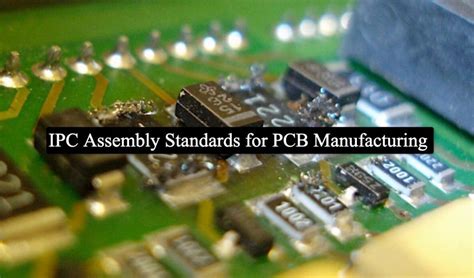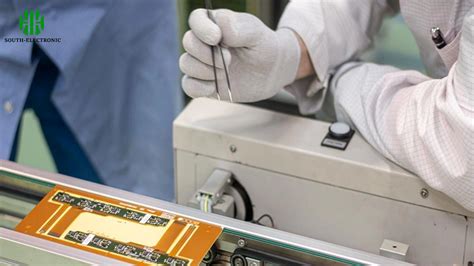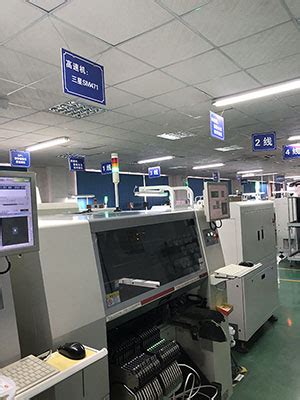Here are 10 SEO-friendly titles under 66 characters for IPC Class 3 PCB manufacturing, adhering to your guidelines:

Key Takeaways
When engaging in PCB manufacturing for IPC Class 3 applications, understanding the stringent standards is critical. These boards demand exceptional reliability for industries like aerospace, medical, and military, where failure is not an option. PCB manufacturing companies must adhere to IPC-6012 and IPC-A-610 specifications, which define requirements for material quality, hole wall integrity, and surface finish.
Here’s a quick comparison of IPC Class 2 vs. Class 3 requirements:
| Parameter | IPC Class 2 | IPC Class 3 |
|---|---|---|
| Annular Ring Width | ≥50μm | ≥75μm |
| Hole Wall Thickness | ≥20μm | ≥25μm |
| Solder Joint Acceptance | Minor defects allowed | Zero defects permitted |
| Testing Rigor | Moderate | Extreme |
To minimize PCB manufacturing cost while meeting Class 3 standards, prioritize design precision. For example, avoid tight spacing or undersized vias, which increase rejection rates. Use advanced materials like high-Tg laminates and ensure controlled impedance for signal integrity.
Tip: Partner with PCB manufacturing companies specializing in high-reliability applications. Their expertise reduces rework and ensures compliance with IPC-A-610’s visual inspection criteria.
Quality assurance processes, such as automated optical inspection (AOI) and cross-sectional analysis, are non-negotiable. These steps verify compliance with IPC-6012’s mechanical and electrical performance benchmarks. While PCB manufacturing business operations may face higher upfront costs, the long-term reliability of Class 3 boards justifies the investment, especially in life-critical systems.
By mastering these best practices, you can navigate the complexities of PCB manufacturing for IPC Class 3 and deliver boards that meet the highest industry benchmarks.
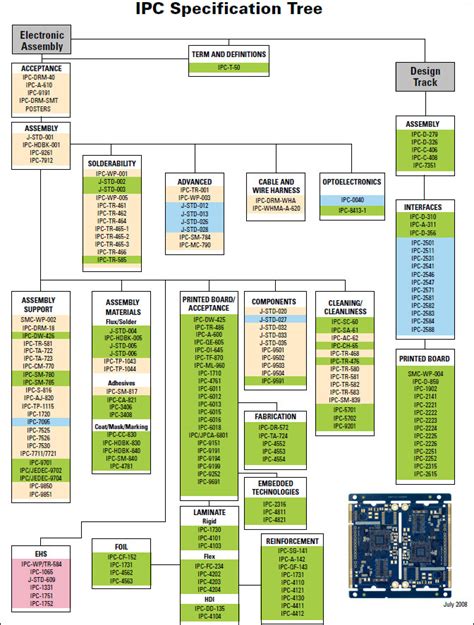
Understanding IPC Class 3 PCB Standards and Compliance
When designing or sourcing PCB manufacturing for high-reliability applications, understanding IPC Class 3 standards is non-negotiable. These stringent requirements, outlined in IPC-6012 and IPC-A-610, define the quality and reliability benchmarks for printed circuit boards used in mission-critical sectors like aerospace, medical devices, and military systems. Unlike Class 2 standards, which allow minor cosmetic imperfections, Class 3 demands near-perfect fabrication, with zero tolerance for defects that could compromise performance in extreme environments.
For PCB manufacturing companies, compliance starts with material selection. High-grade substrates, such as FR-4 with high glass transition temperatures (Tg), are essential to withstand thermal stress. Equally critical are controlled processes for drilling, plating, and solder mask application, ensuring minimal voids, precise hole wall thickness, and flawless surface finishes. Microsection analysis and automated optical inspection (AOI) are standard practices to verify adherence to these parameters.
Managing PCB manufacturing cost while meeting Class 3 requirements requires balancing precision with efficiency. Advanced testing protocols, like thermal cycling and cross-sectional inspections, add to production expenses but are indispensable for validating reliability. Partnering with a trusted manufacturer, such as Andwin PCBA, ensures access to expertise in optimizing processes without cutting corners.
In the PCB manufacturing business, documentation and traceability are equally vital. Every step—from laminate selection to final electrical testing—must be meticulously recorded to meet audit requirements. This level of rigor not only safeguards against failures but also builds trust with clients in regulated industries. By prioritizing compliance, you ensure your boards deliver the durability and longevity demanded by the most challenging applications.
Key Differences Between IPC Class 2 and Class 3 PCB Manufacturing
When choosing between IPC Class 2 and Class 3 PCB manufacturing, understanding the distinctions is critical for ensuring reliability in high-risk applications. Class 2 boards are designed for general electronics where continuous performance is desirable but not mission-critical, such as consumer devices. In contrast, Class 3 standards apply to PCB manufacturing for industries like aerospace, medical, and military, where failure is not an option. The primary differences lie in tolerances, testing rigor, and material requirements.
For PCB manufacturing companies, Class 3 demands tighter controls. Trace widths, spacing, and hole sizes must adhere to stricter tolerances—often 20–30% tighter than Class 2. This reduces the margin for error, requiring advanced fabrication techniques. Additionally, Class 3 mandates 100% electrical testing and stricter inspection criteria under IPC-6012 and IPC-A-610 guidelines. Defects like minor solder voids or minimal annular ring violations, acceptable in Class 2, are rejected in Class 3.
Material selection also diverges. Class 3 boards often use high-performance substrates like polyimide or ceramic-filled laminates to withstand extreme temperatures and mechanical stress. This directly impacts PCB manufacturing cost, as specialized materials and extended testing increase expenses. However, for applications like implantable medical devices or avionics, these costs are justified by the need for zero-defect performance.
Another key factor is documentation. PCB manufacturing business serving Class 3 clients must provide exhaustive traceability reports, including material certifications, process controls, and lot-specific testing data. This ensures compliance with regulatory frameworks governing critical systems.
Ultimately, the choice between Class 2 and Class 3 hinges on your application’s risk profile. While Class 2 suffices for everyday electronics, Class 3 is non-negotiable for environments where reliability directly impacts safety. Partnering with PCB manufacturing experts familiar with these nuances ensures your design meets the exacting standards required for high-stakes industries.
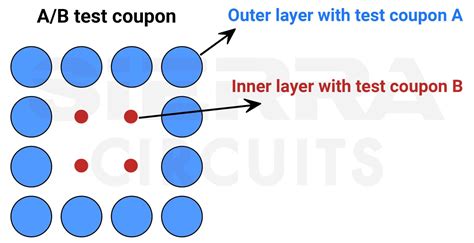
Best Practices for Designing High-Reliability IPC Class 3 PCBs
Designing IPC Class 3 PCBs requires meticulous attention to detail to meet the stringent reliability demands of industries like medical, aerospace, and military. Start by selecting materials with proven performance under extreme conditions, such as high-temperature laminates or low-loss dielectrics, to ensure longevity in mission-critical environments. Adherence to IPC-6012 and IPC-A-610 standards is non-negotiable, as these define acceptance criteria for structural integrity, solderability, and surface finishes. For instance, annular ring requirements and plated through-hole quality must exceed Class 2 tolerances to prevent failures during thermal cycling or mechanical stress.
When collaborating with PCB manufacturing companies, prioritize those with certified expertise in Class 3 production. Their processes should incorporate advanced inspection techniques like automated optical inspection (AOI) and X-ray testing to detect micro-defects early. To manage PCB manufacturing cost without compromising quality, optimize designs for manufacturability—minimize complex via structures, ensure adequate spacing for high-voltage traces, and validate stack-up configurations through simulation tools.
In high-reliability PCB manufacturing, material traceability and documentation are critical. Ensure your supplier maintains detailed records of raw materials, fabrication steps, and testing results to comply with industry-specific certifications. For medical devices or aerospace systems, parameters like thermal conductivity and signal integrity must align with application-specific environmental stressors.
Finally, integrate redundancy and fail-safes into your layout—such as redundant vias or widened power planes—to mitigate risks in the PCB manufacturing business. Regular design reviews with your fabrication partner help identify potential bottlenecks, ensuring compliance while balancing performance and PCB manufacturing cost. By combining rigorous standards, advanced testing, and collaborative planning, you can achieve durable, high-yield Class 3 boards tailored for zero-failure applications.
IPC-6012 and IPC-A-610 Requirements for Class 3 PCB Production
When designing for IPC Class 3 PCB manufacturing, you must adhere to stringent requirements outlined in IPC-6012 and IPC-A-610. These standards define the performance and acceptability criteria for high-reliability PCBs used in mission-critical applications like aerospace, medical devices, and military systems. IPC-6012 focuses on qualification and performance specifications, mandating tighter tolerances for material quality, hole wall integrity, and plating thickness. For example, Class 3 boards require copper plating uniformity to ensure minimal voids, which is critical for maintaining electrical reliability under extreme conditions.
IPC-A-610, on the other hand, details visual and mechanical acceptability standards. This includes strict guidelines for solder joint quality, component placement, and surface finish integrity. PCB manufacturing companies specializing in Class 3 must implement rigorous inspection protocols, such as automated optical inspection (AOI) and cross-sectional analysis, to verify compliance. Even minor defects—like micro-cracks or insufficient solder fillets—can disqualify a board from meeting Class 3 criteria.
Balancing PCB manufacturing cost with these elevated requirements is a key challenge. Thicker copper layers, advanced via-filling techniques, and specialized testing all contribute to higher production expenses. However, investing in precision processes ensures long-term reliability, reducing the risk of field failures in applications where downtime is unacceptable. For PCB manufacturing businesses, this means partnering with suppliers who understand the nuances of Class 3 standards, from material selection to final validation.
Ultimately, adhering to IPC-6012 and IPC-A-610 ensures your boards meet the durability and performance demands of industries where failure is not an option. Whether you’re prototyping or scaling production, aligning with these standards is non-negotiable for maintaining trust in high-reliability PCB manufacturing.

Critical Parameters for Medical and Aerospace Class 3 PCBs
When designing IPC Class 3 PCBs for medical and aerospace applications, you must prioritize stringent parameters to ensure uninterrupted functionality in mission-critical environments. These boards demand tight tolerances for trace widths, spacing, and hole sizes, often requiring advanced PCB manufacturing techniques like laser drilling and precision etching. Material selection is critical—high-performance substrates like polyimide or ceramic-filled laminates are preferred for their thermal stability and mechanical durability under extreme conditions.
Adherence to IPC-6012 and IPC-A-610 standards ensures compliance with rigorous inspection criteria, including microsectional analysis for plating integrity and thermal stress testing to validate solder joint reliability. For example, copper plating thickness in vias must exceed 25 μm to prevent failures during thermal cycling, a common stressor in aerospace systems. Similarly, medical devices require hermetic sealing and cleanliness levels below 1.56 μg/cm² of ionic contamination to avoid short circuits in sensitive environments.
When selecting PCB manufacturing companies, verify their expertise in handling Class 3 requirements, such as controlled impedance routing and multilayer stack-up alignment within ±3% tolerance. These capabilities directly impact PCB manufacturing cost, as tighter controls and specialized materials increase production complexity. However, compromising on quality to reduce expenses risks catastrophic failures in applications like implantable medical devices or satellite communication systems.
For a successful PCB manufacturing business focused on Class 3 boards, invest in advanced inspection tools like automated optical inspection (AOI) and X-ray imaging to detect micro-cracks or voids in solder joints. Partnering with suppliers certified for military or aerospace-grade materials further ensures consistency. Remember, even minor deviations in parameters like dielectric thickness or solder mask registration can compromise the entire assembly, underscoring the need for meticulous process validation at every stage.

Step-by-Step Guide to Manufacturing IPC Class 3 Compliant Boards
To produce IPC Class 3 compliant boards, you must follow a rigorous process that prioritizes precision, reliability, and adherence to strict industry standards. Start by reviewing design files to ensure they meet IPC-6012 and IPC-A-610 requirements for Class 3, focusing on critical parameters like material integrity, trace widths, and annular ring dimensions. Partnering with experienced PCB manufacturing companies ensures access to advanced fabrication technologies, such as laser drilling and controlled impedance routing, which are essential for high-reliability applications.
Next, select materials rated for extreme environments, such as high-Tg laminates or polyimide substrates, to withstand thermal stress in medical, aerospace, or military systems. During fabrication, maintain tight process controls—for example, etch compensation and plating thickness must align with Class 3 tolerances. PCB manufacturing cost considerations here include investing in premium materials and specialized equipment, but these are non-negotiable for meeting Class 3’s zero-defect expectations.
Inspection is critical. Automated Optical Inspection (AOI) and X-ray testing verify internal layer alignment and solder joint integrity, while cross-sectional analysis checks plating uniformity. Electrical testing, including flying probe or boundary scan, ensures signal integrity under simulated operating conditions. Document every step meticulously, as traceability is mandatory for industries like aerospace, where failure could have catastrophic consequences.
For a successful PCB manufacturing business specializing in Class 3 boards, prioritize continuous training for technicians on the latest IPC standards and invest in certifications like AS9100 or ISO 13485. Balancing PCB manufacturing cost with quality requires optimizing workflows—for instance, grouping high-complexity orders or leveraging panelization to reduce material waste. Finally, collaborate closely with clients to align design choices with manufacturability, minimizing revisions and delays. By embedding these practices, you deliver boards that exceed reliability benchmarks for the most demanding applications.

Quality Assurance in IPC Class 3 PCB Fabrication Processes
To ensure compliance with IPC Class 3 PCB manufacturing standards, rigorous quality assurance (QA) protocols are critical. These protocols verify that every step—from material selection to final inspection—meets the stringent reliability demands of industries like aerospace, medical, and military. PCB manufacturing companies specializing in Class 3 boards prioritize traceability, documenting every component’s origin and testing results to guarantee accountability. Advanced inspection tools, such as automated optical inspection (AOI) and X-ray imaging, are used to detect micro-defects like hairline cracks or insufficient plating in vias, which could compromise performance in high-stress environments.
A key aspect of QA involves adhering to IPC-6012 and IPC-A-610 specifications, which define acceptance criteria for structural integrity and soldering quality. For example, Class 3 requires tighter tolerances for hole wall thickness and copper plating compared to Class 2, directly influencing PCB manufacturing cost due to additional testing and material requirements. PCB manufacturing teams also conduct thermal cycling tests and accelerated aging to simulate decades of operational stress, ensuring boards withstand extreme conditions without failure.
Quality assurance extends beyond technical compliance. Reputable PCB manufacturing businesses implement continuous improvement programs, analyzing defect trends to refine processes. This proactive approach minimizes rework and ensures consistent delivery of boards that meet Class 3’s “zero defect” ethos. By partnering with certified manufacturers, you mitigate risks while optimizing PCB manufacturing workflows for high-reliability applications.
Applications of IPC Class 3 PCBs in Military and Medical Sectors
When designing electronics for mission-critical environments, you need PCB manufacturing processes that prioritize reliability over cost or speed. This is especially true in the military and medical sectors, where failures can have catastrophic consequences. IPC Class 3 PCBs are engineered to meet the stringent requirements of these industries, ensuring zero-defect performance in applications like defense systems, implantable medical devices, and diagnostic equipment.
In military applications, PCB manufacturing companies must adhere to IPC-6012 and IPC-A-610 standards to guarantee boards survive extreme conditions—think vibration in armored vehicles, temperature fluctuations in aerospace systems, or electromagnetic interference in communication networks. For example, radar systems and missile guidance controls rely on Class 3 PCBs to maintain signal integrity and operational stability. While PCB manufacturing cost is higher due to rigorous testing and material selection, the trade-off ensures mission readiness and longevity in harsh environments.
Similarly, the medical sector demands precision. Devices like pacemakers, MRI machines, and surgical robots require boards that operate flawlessly over decades. IPC Class 3 PCB manufacturing ensures traceability, minimal voiding in solder joints, and adherence to cleanliness standards to prevent contamination. Medical PCB manufacturing businesses often face tighter regulatory scrutiny, making compliance with Class 3 criteria non-negotiable. For instance, a defective PCB in a ventilator or infusion pump could risk patient safety, underscoring the need for zero-tolerance defect management.
Both sectors share a common thread: PCB manufacturing processes must prioritize quality control, advanced inspection techniques (like automated X-ray testing), and collaboration between designers and fabricators. Whether you’re sourcing boards for a military satellite or a portable defibrillator, choosing a PCB manufacturing company with proven Class 3 expertise ensures your designs meet the highest reliability benchmarks.
Conclusion
When engaging with PCB manufacturing for IPC Class 3 applications, you must prioritize precision, reliability, and adherence to stringent industry standards. PCB manufacturing companies specializing in Class 3 compliance focus on meeting critical parameters outlined in IPC-6012 and IPC-A-610, ensuring boards perform flawlessly in high-stakes environments like medical, aerospace, and military systems. While PCB manufacturing cost for Class 3 projects is typically higher due to rigorous testing and material requirements, the investment aligns with the need for zero-defect performance in mission-critical applications. For businesses operating in the PCB manufacturing business, balancing cost-efficiency with uncompromising quality is key to maintaining competitiveness. Always verify that suppliers implement advanced inspection techniques, such as automated optical inspection (AOI) and X-ray testing, to guarantee compliance with Class 3 specifications. By understanding the interplay between design complexity, material selection, and quality assurance protocols, you can optimize outcomes for high-reliability projects while navigating the challenges of PCB manufacturing for demanding industries.
Frequently Asked Questions
What distinguishes IPC Class 3 PCB manufacturing from other classes?
IPC Class 3 standards prioritize extreme reliability for mission-critical applications. Unlike Class 2, which suits consumer electronics, Class 3 requires tighter tolerances, stricter PCB manufacturing processes, and rigorous testing to ensure performance in aerospace, medical, or military systems.
How does IPC-A-610 compliance impact PCB manufacturing companies?
Adhering to IPC-A-610 ensures PCB manufacturing companies meet visual inspection criteria for defects like soldering flaws or component placement errors. For Class 3, these checks are more exhaustive, minimizing risks of field failures in high-stakes environments.
What drives PCB manufacturing cost for IPC Class 3 boards?
Higher PCB manufacturing cost stems from advanced materials, precision drilling, extended testing (e.g., automated optical inspection), and compliance with IPC-6012. Tighter trace spacing and controlled impedance requirements also add complexity, demanding specialized expertise.
Why choose specialized PCB manufacturing businesses for Class 3 projects?
General PCB manufacturing businesses may lack the equipment or certifications for Class 3. Specialized providers invest in cleanrooms, microsection analysis, and X-ray inspection to validate layer alignment and via integrity, ensuring compliance with aerospace or medical regulations.
What parameters are critical for medical-grade IPC Class 3 PCBs?
Medical devices demand hermetic sealing, biocompatible materials, and resistance to sterilization processes. PCB manufacturing for this sector requires traceability, contamination control, and adherence to FDA or ISO 13485 standards alongside IPC Class 3.
How do aerospace applications influence Class 3 PCB design?
Aerospace PCBs must withstand extreme temperatures, vibration, and radiation. Designs often incorporate redundancy, high-Tg materials, and conformal coatings. PCB manufacturing companies serving this niche typically follow MIL-PRF-31032 and AS9100 protocols.
What quality assurance steps ensure IPC Class 3 compliance?
Beyond standard testing, manufacturers perform thermal cycling, cross-sectional analysis, and time-domain reflectometry. Documentation, including Certificates of Conformance and detailed test reports, is mandatory for audit trails in regulated industries.
Ready to Start Your IPC Class 3 PCB Project?
For expert guidance and reliable PCB manufacturing services, please click here to explore our solutions. We specialize in high-reliability boards tailored to aerospace, medical, and military requirements.

